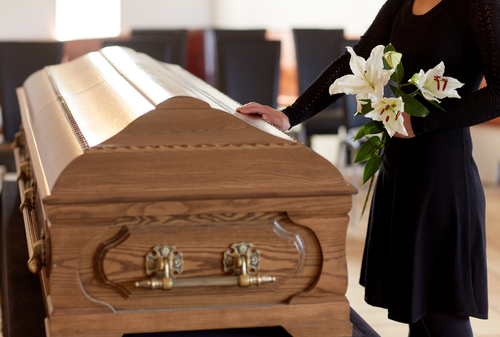In a nutshell, a wrongful death can be defined as a death caused by another party’s wrongful or negligent conduct. In general, these cases are divided into two main categories. Malpractice cases occur when a professional, like an accountant, lawyer, or doctor, does not meet the expected standard of care, causing the death of another individual.
Negligence cases on the other hand occur when a person’s death is attributed to the reckless or careless conduct of another party. Slip and fall cases and defective products are some of the common examples here.
This article delves into how wrongful death claims work. To find out everything you need to know about these legal proceedings, continue reading below.
What is a Wrongful Death Claim?
According to the language of the law, the phrase “wrongful death” normally refers to a wrongful death lawsuit/claim. It arises when an individual dies as a result of a criminal, negligent, or reckless act of another entity or person.
Such a claim can also arise in a situation where the death was caused by an intentional action. This means that it can stem from criminal conduct. However, these are civil cases, separate from any criminal proceedings.
Who Can File a Wrongful Death Claim?
Certain loved ones of the deceased or a representative of the estate can file a wrongful death claim for damages. Some of the people who can be able to bring this case to court include:
- Members of the deceased’s immediate family – Parents of unmarried children, spouses, children (including adopted) and any other immediate family members of the deceased can file a claim for compensation for wrongful death in all states. Distant family members, such as grandparents and siblings, may be allowed to pursue damages in some states.
- Dependents – The right to recovery of damages through legal proceedings also extends to anyone financially dependent on the deceased including life or domestic partners. Anyone who suffered a loss of financial support can also file a wrongful death case in some states.
- Representatives for the estate – If the estate’s representative wins the claim, the damages are distributed to the deceased’s next of kin.
To find out whether you can be able to pursue legal action for the wrongful death of a loved one, be sure to consult the local laws in your state.
Common Causes of Wrongful Death
These claims can arise from any type of incident/accident that results in death including:
- Medical Malpractice
- Motor Vehicle Accidents
- Product Liability Accidents
- Pedestrian, Motorcycle or Bicycle Accidents and,
- Work Related Accidents, among others.
Proving Negligence in Wrongful Death Cases
In order to bring a wrongful death claim on behalf of a deceased loved one, you must be able to prove the following elements of negligence:
- Duty of Care: Generally, everyone has a duty of care towards other people. This means that it is upon you to act in a way that does not bring harm to others. In wrongful death proceedings, you must be able to demonstrate that the defendant/person at fault owed the deceased a duty of care.
- Breach of Duty: After establishing the duty of care, you must clearly show that the defendant breached it. You need to show how the at-fault party deviated (through their carelessness, recklessness, or negligence) from the accepted practices/norms.
- Causation: This simply requires you to establish a direct link between the breach of duty described above and the death of your loved one.
- Damages: These refer to any measurable harm, losses, or injuries suffered by the surviving loved ones of the deceased as a result of the wrongful death. Damages can be divided into two main categories, economic and non-economic. Punitive damages may also be awarded in some cases as a means of deterring others from engaging in similar behavior.
You need solid evidence to prove negligence in wrongful death cases. Some of the different types of evidence that can be used include surveillance footage, accident reports, medical records and expert testimony, among others.
Damages Available in Wrongful Death Claims
Compensable damages resulting from these cases can be divided into:
- Economic: This refers to any losses that can be measured in monetary terms. Good examples here include burial expenses, medical costs incurred before death and any financial support that the deceased would have provided.
- Non-Economic: These damages are specifically meant to compensate the plaintiff for any suffering and pain caused by the death of their loved one. Common examples include mental anguish, emotional distress, loss of companionship and nurturing, pain and suffering and more. These damages are normally hard to quantify.
The process of calculating damages varies from one state to the other. The maximum amount that can be awarded may or may not be capped depending on the state. The final award may also take into account the earning potential, occupation, age and other specific facts of the deceased.
The Legal Process for Wrongful Death Claims
Wrongful death cases normally involve a complicated process that is governed by strict deadlines and complicated legal guidelines. These cases normally follow the steps outlined below:
- Hiring an Attorney: To boost your chances of achieving the desired outcome and generous compensation, you need to hire the right attorney.
- Investigation and Evidence Gathering: The next step is to conduct comprehensive investigations and collect evidence that paints a complete picture of what happened. The findings at this stage will help your lawyer identify the at-fault party.
- Filing the Claim: You will need to file the necessary documents to initiate a wrongful death claim. The first of which is a petition notifying the defendant of the legalities and facts of the case. You will also need to file a summons document that informs the defendant of the lawsuit they are facing and where the case will be held.
- Settlement Negotiations: After determining the value of your case, your attorney will send a demand letter to the at-fault party’s insurer. This will set the stage for the commencement of settlement negotiations. The insurance company may accept or respond with a counteroffer.
- Trial Process: If the negotiations are not fruitful, your lawyer will be forced to file a complaint (accompanied by supporting documents) with the circuit court clerk’s office.
Statute of Limitations for Filing a Claim
Wrongful death claims must be filed within a specific time. Failure to do so might mean that you miss out on the chance to hold the at-fault party accountable and pursue the damages due to you and your family.
In the state of Georgia, the statute of limitations is set at two years – starting from the date of the death. It is worth noting that this may vary in some situations – and from state to state. As such, be sure to consult our team of experienced attorneys in case you are not sure.
Speak With an Experienced Wrongful Death Lawyer Today
Understanding wrongful death claims can help you hold the responsible party accountable and seek the compensation you and your family deserve. If you think that your loved one has died as a result of the wrongful conduct of another party, you should think about initiating a wrongful death claim on their behalf.
At SHElaw firm®, we pride ourselves on being a top-rated Atlanta law firm with a proven track record when it comes to the professional and successful handling of criminal and personal injury cases.
Call us today at 470-788-8930 to speak to a seasoned Georgia wrongful death lawyer. You can also visit our website to find out more about how we can help in your time of need or to schedule a free consultation.










